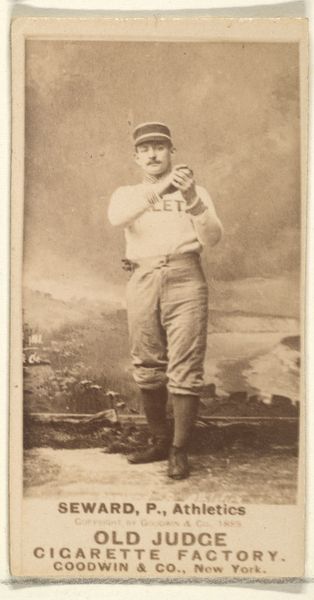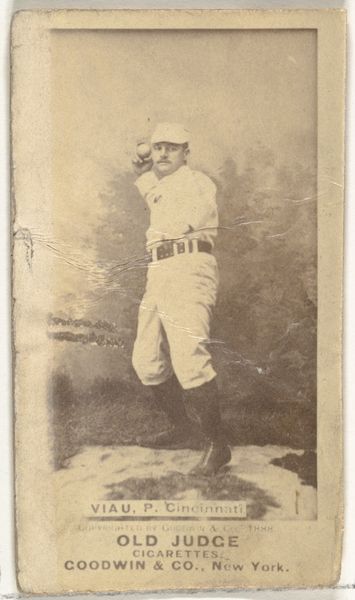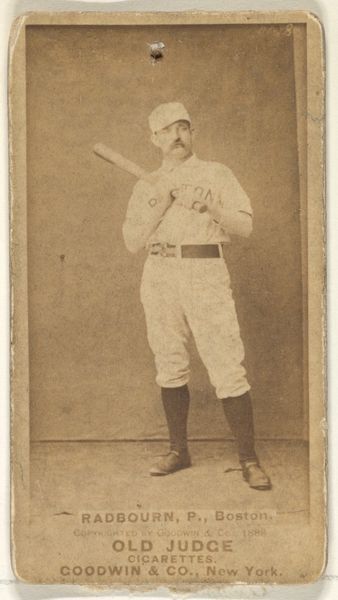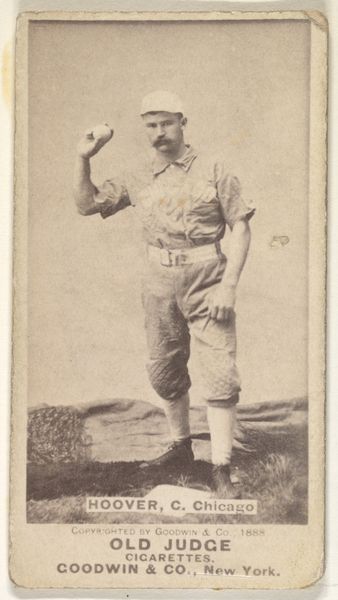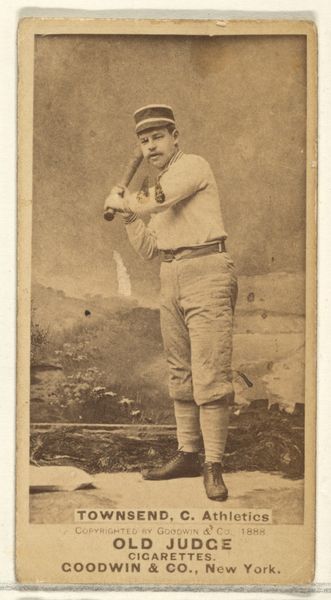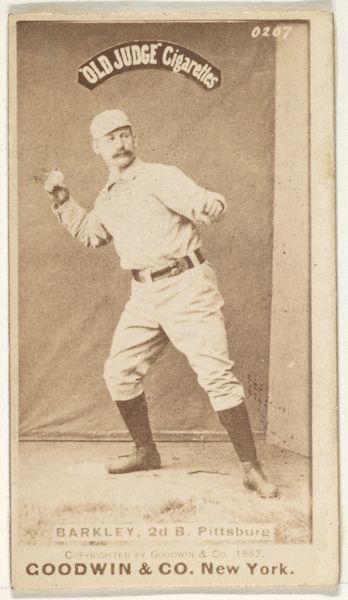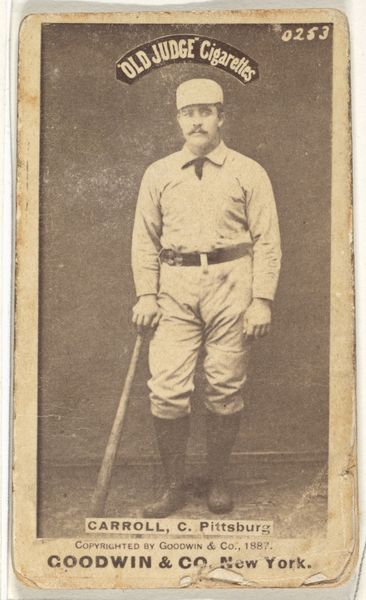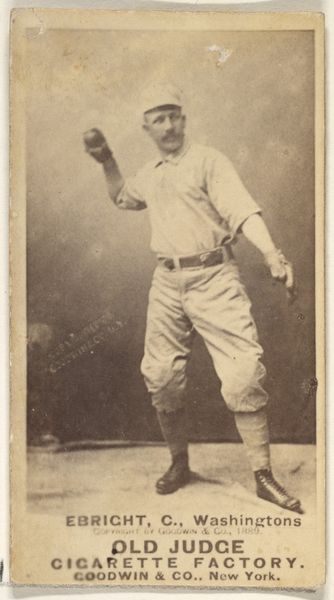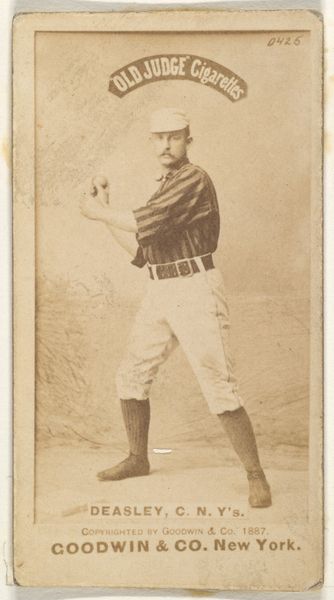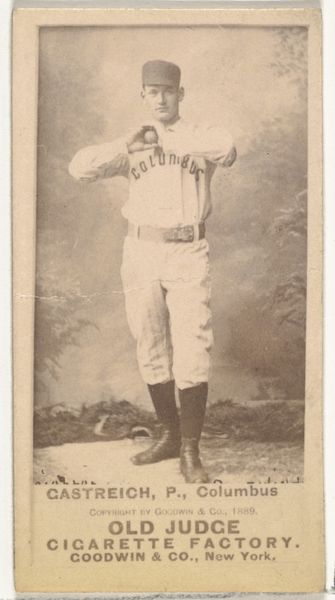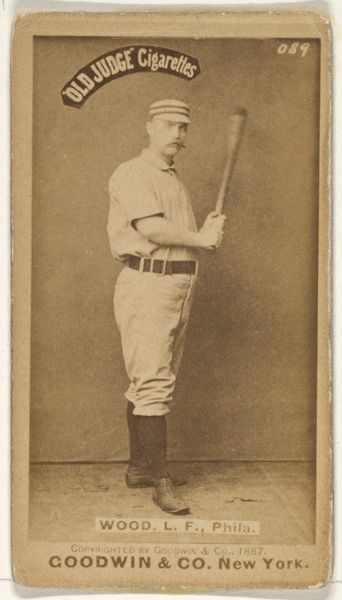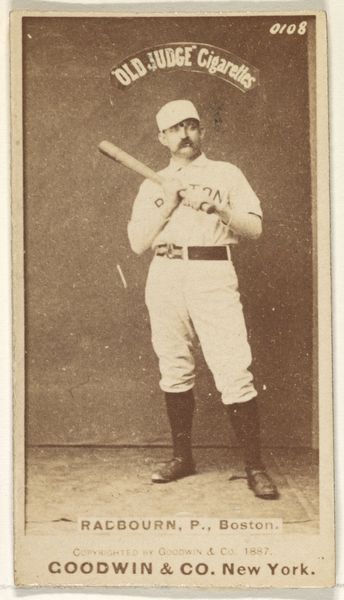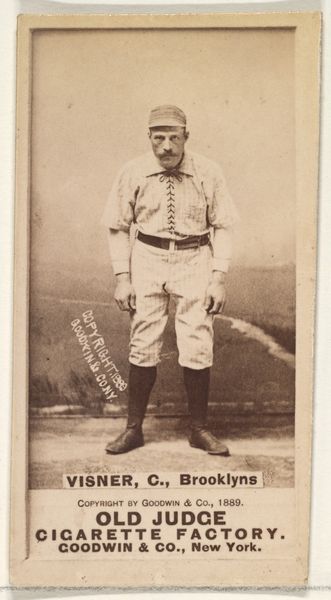
Seward, Pitcher, Philadelphia Athletics, from the Old Judge series (N172) for Old Judge Cigarettes 1899
0:00
0:00
drawing, print, photography, albumen-print
#
portrait
#
drawing
# print
#
photography
#
athlete
#
albumen-print
Dimensions: sheet: 2 11/16 x 1 3/8 in. (6.9 x 3.5 cm)
Copyright: Public Domain
Curator: What immediately strikes me is the tonal uniformity and almost melancholic stillness within this albumen print. The figure of Seward, a pitcher for the Philadelphia Athletics, seems suspended in time, disconnected from the energy of the game. Editor: Indeed. This baseball card, "Seward, Pitcher, Philadelphia Athletics," from the Old Judge series dating to 1889 and produced by Goodwin & Company, operates on multiple levels. It is both an artifact of burgeoning commercial culture and a fascinating snapshot of late 19th-century athleticism and its construction. The photograph seems to suggest this stoicism in the face of industrial advancement. Curator: Yes, but observe how the sepia tones flatten the image, reducing depth. Notice, too, the almost clumsy composition, where Seward's figure dominates, nearly obscuring the indistinct background landscape. The formal properties invite contemplation on the constraints of early photographic printing and the artificiality it imposed. Editor: But that flattening can also read as a democratizing effect. Baseball itself was becoming a popular, accessible pastime. This portrait, circulated through cigarette packs, becomes a way to literally consume and participate in the emerging celebrity culture and perhaps dream of access into that type of masculinity. It highlights the ways capitalist ventures shape athletic ideals along gendered, often racialized, lines. Consider the absence of people of color in professional baseball at the time, the so-called Gentlemen's Agreement, a consequence of systemic racism. Curator: Yet the subject, Seward, with his posture and gaze, evokes a classic archetype: the American sportsman. Though humble in origin, the albumen medium elevates him and the entire design recalls something closer to art rather than raw commercial enterprise. Editor: True, the nostalgic feel belies the inherent contradictions of a culture rapidly commodifying leisure and the human body. Its significance goes far beyond pure aesthetics, no? Curator: Precisely. Through close visual analysis, coupled with a careful investigation of historical context, we unveil the multifaceted nature of seemingly simple artworks. Editor: A reminder of the value that artworks hold, capturing critical moments in a history which shaped contemporary social experiences and ideologies.
Comments
No comments
Be the first to comment and join the conversation on the ultimate creative platform.
